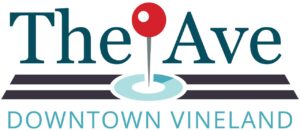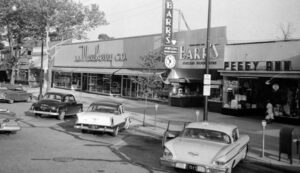
Past & Future
modern-day proponents see not the present, but the future.
When Charles K. Landis watched the spike being hammered into the ground in the center of Vineland in 1861, he was blind to the muddy scrub brush spotted with shacks surrounding him.
He instead saw a journey forward toward a thriving commercial and residential community along his broad avenue. Vineland’s founder saw not the present, but the future.
Landis was mocked for his idealism, his ridiculous 100-foot wide roadway through the wilderness, and his misguided determination to not only build a town from nothing, but to populate it within a few years with industrious and temperate farmers, workers, and entrepreneurs, drawn by inexpensive land, commercial opportunity, and favorable climate.
Landis endured the scoffs and jeers of those non-believers, many of whom were more than willing to come to his city when it began to prosper.
Downtown Vineland remains on that journey to the future and in October 2016, a vision comparable in some ways to the founder’s has been unveiled for all to see.
The symbolic stake is now an iconic pin, pointing to Vineland’s downtown: The place where his dream resides in the 21st century.
 Landis’ mercantile district was started during the Civil War. It weathered more wars and business downturns. As most of the country did, it prospered in the post-World War II era. Cleanliness, wide sidewalks, endless retail and dining options, and dedicated business people gave Vineland’s now more than 35,000 residents “The Avenue,” where so many of them wanted to be.
Landis’ mercantile district was started during the Civil War. It weathered more wars and business downturns. As most of the country did, it prospered in the post-World War II era. Cleanliness, wide sidewalks, endless retail and dining options, and dedicated business people gave Vineland’s now more than 35,000 residents “The Avenue,” where so many of them wanted to be.
Cruising that Avenue was not only exciting for all the town’s Baby Boomers in the 1950s and 60s, but also for young people across the region who liked driving side-by-side (remember its 100-feet wide), maybe beating the next guy to the light, or swinging around the Circle for the tenth, twentieth, thirtieth time.
The cars changed and the pace slowed through the 1970s, though, as consumers flooded the malls ringing the downtowns throughout the country. The central district here was ravaged quickly by consumers’ flight to indoor, all-in-one place shopping and eating. Decline set in, aggravated by socioeconomic and demographic changes.

As the new century dawned, Landis-like visions of a post-modern central business district emerged in aggressive redevelopment plans, solid strategic planning, incentives to existing and unfolding Landis Avenue enterprises, and a formal downtown improvement effort. The people on this journey of initiative and renewal were tossed by the sea of the 2008 recession but kept on course and their arduous work is reflected both in today’s downtown and, even more, in tomorrow’s
With a vision of the Generation Xers and Millennials adopting the old downtown as their new one, the leaders, volunteers, and sponsors of the future don’t deny the challenges ahead but are poised to overcome them.
Interestingly, they face the same scorn that Landis did.
When the concepts are put forth for a new era of microbreweries, vintage shops, ethnic businesses, and new entertainment options on Landis Avenue; its proponents are ignored. When Russell Swanson and the Vineland Downtown Improvement District (VDID) team envision upper-floor housing for young people above new tech startups, makerspaces and hackerspaces, and residents and consumers riding bikes and trolleys in town, they are criticized and questioned.
Perhaps, the past will inform the future—when the inspired and incessant work of those who believe eventually results in a more progressive and welcoming downtown. Perhaps even the hardiest deniers will come back and be welcomed.

